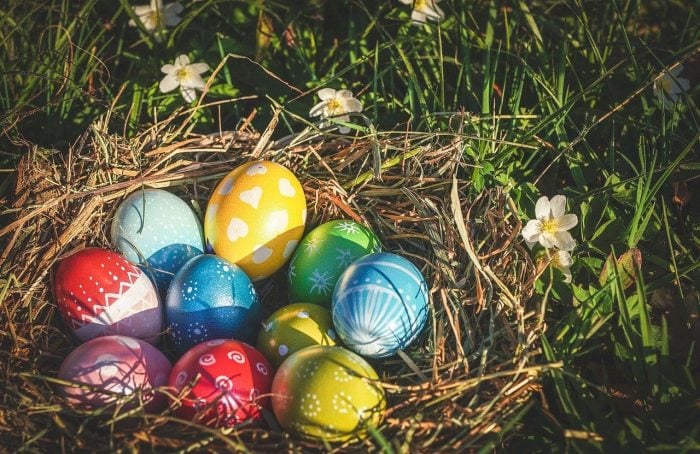You would have to go back a long time to find the tradition of painting Easter eggs. These oval shapes which represent birth made the perfect symbol of fertility, and are purported to date back to pre-Christian times.

Tradition Of Painting Easter Eggs
Nowadays, a popular folk art practiced in many European countries, the Easter eggs show a variety of designs and colours. It shows that even on something as delicate as an egg, it is possible to create a style which is recognized as belonging to the traditions associated with certain countries. From many different countries within Europe, the Easter egg fashion has turned into a very real art-form, with different colours and styles representing the work put into the eggs. In fact, this page gives a good overview of the colours employed in different nations.
The Germanic, Hungarian, and Romanian Easter Eggs
The Germanic eggs take on a very traditional folk art look, but the style of those created in countries such as Hungary and Romania really do stand out as extraordinary, with their clever, intricate, and stylized designed placed on a very colourful background, often with representations of the cross of Jesus, and associated with the Orthodox Catholic church.
Austrian Easter Eggs
Austria has joined in with the tradition, and their Austrian eggs take on a much more contemporary style, using styles such as ladybugs to tempt market buyers. The wealth of designs used in Austria are diverse and include musical notes, strawberries, and other deliciously appetizing works of art, appealing generally to all ages.

Czech Easter Eggs
If comparing other artwork placed on eggs, the Czech Republic feature painted eggs for Easter, though their designs are in traditional colours and are decorated by girls to give to boys during the Easter celebrations. There is also a national contest for eggs around the Easter period. The materials used for the intricate work include bees wax to isolate different areas while painting another colour and these days even include transfers.
Looking across the Eastern block countries, many have adopted this tradition with Pysanka designs (printable to download) becoming popular throughout countries within the geographical limits of this area. The tradition dating from pre-Christian times has been traced back as a Pagan celebration. What is interesting is that the Pagans had much the same symbolism and used many of the inspirational designs used today, though allotted different meaning to those designs.

Kistka Tool
The tool used for the delicate patterns is called a Kistka, and the hot wax is used to create designs already sketched with light pencil. After each application, dye is added to the egg, so that eventually, after many applications of painted colour, the egg takes on a richness of colour. Similar to other art processes, the wax stops colour from staining areas of the egg during the dyeing process, and the painting of the egg isn’t complete until the wax is removed. It’s a very clever technique of blocking, which allows the paints to produce a very detailed design.
Marguciai Easter Eggs
The style of Lithuania is called Marguciai and similar to Pysanka designs in egg painting, the folk art style of marguciai seems less formal and encompasses folk art images as well as patterns which are repeated, but are basically simple. Using the same blocking techniques as those described above, the Marguciai eggs show pictures of rabbits, flowers and characters using paint colours which are applied with a different tool from the Kistka and which is relatively fine in nature.

For those wishing to try these painting Easter egg techniques, there are good instructional videos on YouTube, and this takes the painter through the different processes which make up the painted eggs. The paints used are water colour paints and different blends of colours can be tried to find the perfect colour.



Interesting read about the different cultural traditions of painting Easter eggs. The painted eggs are so pretty.
This is an interesting article. The eggs are very beautiful
These are beautiful, we were in Prague three years ago at Easter I was able to pick some up as gifts.